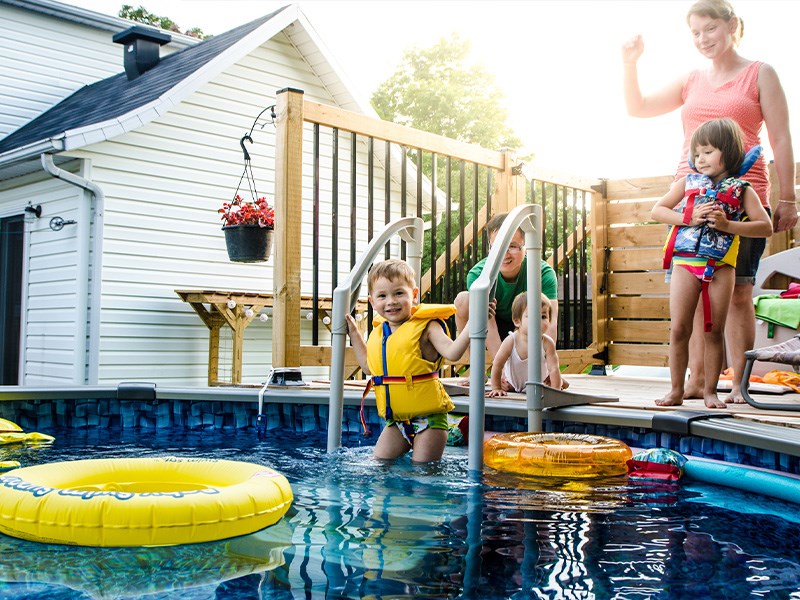As the warm weather approaches, there is no better way to beat the heat than with a refreshing swim in a backyard pool.
Your pool is the perfect place to sit back and relax this summer, but it is not free from dangers.
This article will help outline many of the most overlooked dangers of backyard pools.
Pay Attention - The first rule you should have in place as a parent or guardian is that you must give 100% of your attention to swimming children, no matter the pool or body of water. This means no tanning, no phone calls, and no Tik Tok! A child can drown in just 1 inch of water in under 1 minute, so your undivided attention is absolutely required.
Kiddie Pools - While seemingly innocent, kiddie pools can be just as dangerous as any other pool when not handled properly. Children in a kiddie pool still require your complete attention. After using a kiddie pool, make sure to dump out the water and flip over the pool.
Lifejackets - Lifejackets and PFDs are the only floatation devices that experts recommend to keep swimmers safe. Whether they are old, young, skilled, or new to swimming, a life jacket can help prevent 80% of drownings.
Water Wings - Water wings, pool noodles, and other inflatables cannot be used as an alternative to a lifejacket. The Lifesaving Society and Red Cross safety experts only recommend certified lifejackets and PFDs.
Ladders - In some instances, like in above-ground pools, there may be a small space behind the ladder where swimmers can get stuck and drown. Always remind swimmers of all ages to avoid swimming around, under, and behind ladders.
Drains & Pumps - In some pools, a drain can pose a risk to swimmers. It is possible that swimwear and hair can get caught on the pump or drain of a pool, which can lead to drowning. Always remind swimmers to simply avoid swimming near drains and pumps to keep themselves safe.
Pool Covers - Pool covers can pose a significant danger to anyone walking nearby. If someone accidentally falls into a pool when the cover is still on, it becomes extremely difficult to free yourself from the cover. So it's important to consider a covered pool to be just as dangerous as one that is open.
These are just a few of the most common dangers a backyard pool can have. To learn more about what you can do to keep you and your guests safe while swimming, visit
The Lifesaving Society’s website on backyard pool safety.
Have fun and stay safe this swim season!



